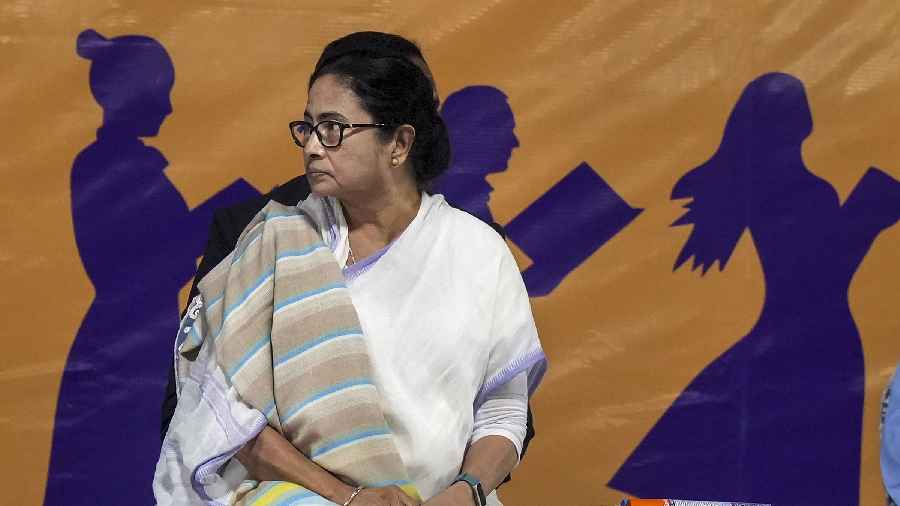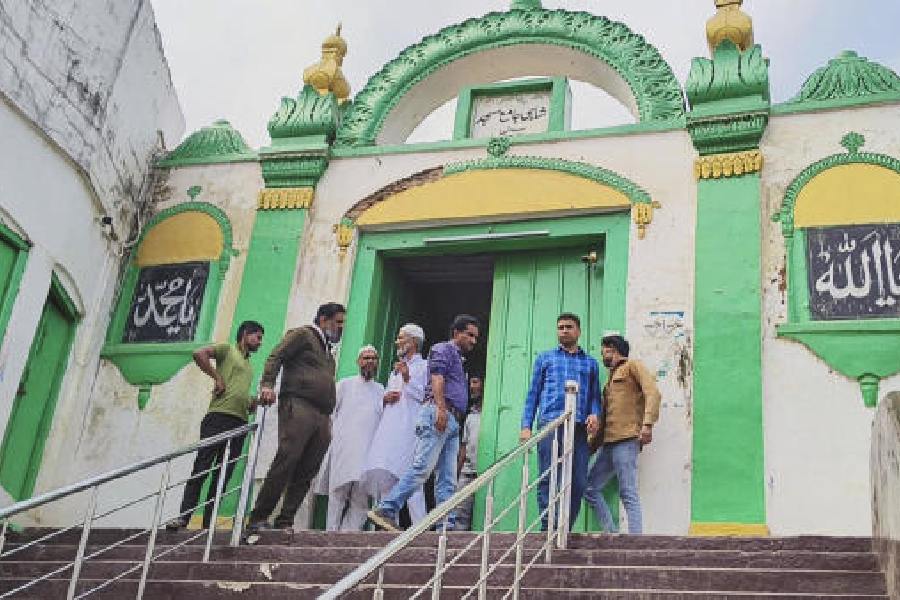In generating a fierce mood of anti-incumbency, strong enough to unseat an established regime, two themes have resonated across the country.
The first is political high-handedness and arrogance. The electoral tsunami that caught the Congress under Indira Gandhi unawares in 1977 and saw the election of the first non-Congress government at the Centre led by Morarji Desai was, by far, the most important example of this phenomenon. It saw a spectacular rout of the Congress in North India and the defeat of the prime minister herself. Also defeated was Sanjay Gandhi, projected as the youth icon and perceived as the architect of compulsory sterilisation, which created a reign of terror.
At a regional level, in West Bengal, perceived political insensitivity was responsible for two major electoral tremors. The first was the failure of the Congress to win an outright majority in 1967 — its resounding defeat had to await a mid-term election in 1969 — as a consequence of its supposed mishandling of food shortages. In hindsight, there was much to commend the policy of foodrationing and enforced austerity thatthe then chief minister, Prafulla Chandra Sen, brought into play. However, the failure of a smug Congress leadership to manage the political optics and the sustained mass mobilisation by the Left parties saw an entrenched dispensation being cast in the role of a villain.
The second example of high-handedness rebounding on an entrenched political dispensation was witnessed in 2011. In the state assembly election that year, the all-powerful Left Front led by the regimented Communist Party of India (Marxist) crashed to an ignominious defeat, following its disregard of the opposition to compulsory land acquisition for industrial projects. Here too, what the former chief minister, Buddhadeb Bhattacharjee, attempted was perhaps in the long-term interests of a state that had experienced sustained economic decline. However, by unleashing ‘class action’ by the cadres, the regime triggered a backlash against its policy of intrusive control over people. Like the Congress in 1967, the CPI(M) in 2011 couldn’t anticipate that the sheer scale of disapproval of a regime would set in motion the building of an alternative.
Apart from high-handedness, corruption is the other factor that has provoked the electorate to search for political alternatives. At the national level, this has been in evidence patchily. The failure of Rajiv Gandhi to renew the overwhelming mandate he received after the assassination of his mother in 1984 was, to a very large extent, due to the fallout of the Bofors case. However, this was not an ordinary case of political kickbacks for a big order of armaments. Although there was some evidence to suggest that the mysterious Mr Q was an Italian friend of the Gandhi family, the Congress government was a victim of a very clumsy attempt to manage the controversy. The vindictive targeting of Vishwanath Pratap Singh conveyed the unmistakable impression that the regime had much to hide. This had its own political and electoral consequences. The Congress suffered grievously in northern India but held on to its dominant-party status in the south.
Corruption, it would seem, has been far more significant as an electoral issue at the state level than it has been in parliamentary elections. Although misgovernance has often been packaged as corruption, there is a clear difference between the two. Rajasthan and Himachal Pradesh have had a long tradition of state governments alternating between two parties — in recent times, between the Bharatiya Janata Party and the Congress. There have also been loud accusations of corruption levelled against incumbent chief ministers. It is also true that a few controversial decisions could do with some forensic scrutiny. However, rarely, if ever, have assembly elections been a referendum on the corruption of an incumbent government. The elections that saw the overthrowing of J. Jayalalithaa in the Tamil Nadu assembly election of 1996 and the Badal family in Punjab in 2017 were explicitly centred on corruption of the incumbent governments and, to that extent, were aberrations.
In the politics of West Bengal, the Opposition has, by and large, focussed its attacks on the supposed ‘anti-people’ policies of the government. Since violence became a feature of the political culture of the state from the elections of 1971, there have also been allegations of undemocratic conduct. It was the CPI(M) that was at the receiving end of the backlash against violence in the elections of 1971, 1972 and 2011, whereas the Congress was ousted on the strength of Siddhartha Shankar Ray’s record of political muscle-flexing in 1977. What is, however, noteworthy is that apart from stray accusations of fiscal impropriety levelled against the Congress leadership in 1967, the distaste for corruption has never before featured in West Bengal’s election campaigns.
The issue of political extortion — the colloquial name is tolabaji — made an appearance during the assembly election of 2016, but it wasn’t strong enough to subsume the belief that the Trinamul Congress deserved a little more show of generosity to prove its mettle. In 2021, the BJP raised the issue of economic stagnation of the state which, in turn, was partly attributed to the grasping tendencies of the local TMC units. However, there were two countervailing factors that benefited the incumbent. First, while it was conceded that extortion had blunted the productivity of West Bengal, the top leadership, including the chief minister, was insulated from the blame. The problem, it was believed, lay in the inherent indiscipline of the local units. Mamata Banerjee was still seen to be above suspicion. Secondly, thanks to the abrupt rise of the BJP in West Bengal, the focus of politics shifted rapidly to an emerging communal schism which, in turn, overshadowed issues of day-to-day governance, including corruption.
It is unlikely that this scenario will repeat itself in the Lok Sabha election next year and the assembly election of 2026. The sheer quantum of corruption and the evidence that both big and small functionaries of the TMC have fattened themselves by recklessly throwing all norms to the winds have been game-changers. As the by-election results to the Muslim-dominated Sagardighi constituency indicated, the distaste for corruption may well be becoming more important than issues of religious identity. If this trend persists, the likelihood of corruption redefining the contours of West Bengal politics is imminent.










